An innate sweetness pervades the works of Simone Cantarini (Pesaro, 1612 - 1648), painter of contrasts: restless and rebellious was the man, delicate and elegant his painting. And in his art, even the sacred becomes poetry. Or rather: of an openly " elegiac " painting , of sacred elegies speaks Anna Maria Ambrosini Massari, a specialist of the Marche painter, who together with Yuri Primarosa and Luigi Gallo curated the exhibition Simone Cantarini. A Young Master (Urbino, Galleria Nazionale delle Marche, May 23 to October 12, 2025). Cantarini was a painter of complex religious images, to which he nevertheless knew how to infuse a “renewed lyricism of gestures,” Ambrosini Massari writes, “made up of glances and silences, intimate and everyday moments.” We speak of sacred elegies “because even in the sacred there insinuates that form of poetry which is above all an inner and individual outlet, of the heart and of feeling: in the altarpieces as in the room paintings a subdued, theatrical and true song rises up, which knows how to modulate the more courtly voice of Guido Reni with the more earthly voice of post-Caravaggio naturalism.”
In Simone Cantarini’s painting, therefore, even the sacred becomes poetry of the soul. Far from the monumental emphasis of much seventeenth-century painting, his work is shot through with an intense elegiac vein that transforms spirituality into intimate, everyday gesture. Cantarini, in advancing his own idea of sacred painting, fits into the groove of a well-defined Urbino line, since he inherits the sweetness of Raphael filtered through Federico Barocci, transforming it, however, into a new language, marked by an emotional lyricism that is capable of combining classicism and naturalism. His “sacred elegy” is a form of visual poetry made up of small gestures, intense gazes, ecstasy and melancholy. And still his work fascinates us with its ability to translate the divine into feeling, to make spirituality a refined form of poetry. It is a painting that seeks to touch the heart even before the mind, a painter who speaks of sensations rather than dogma. The sacred, in Cantarini, hardly imposes itself. On the contrary, it surfaces discreetly in the absorbed faces, the barely moved draperies, the intimate spaces that suggest rather than declare. Even his large altarpieces are shot through with a lyrical tension that defuses any academic or triumphal solemnity. The tone is always subdued, the composition calibrated between light and shadow, the scene charged with a gentleness that becomes restrained emotion.
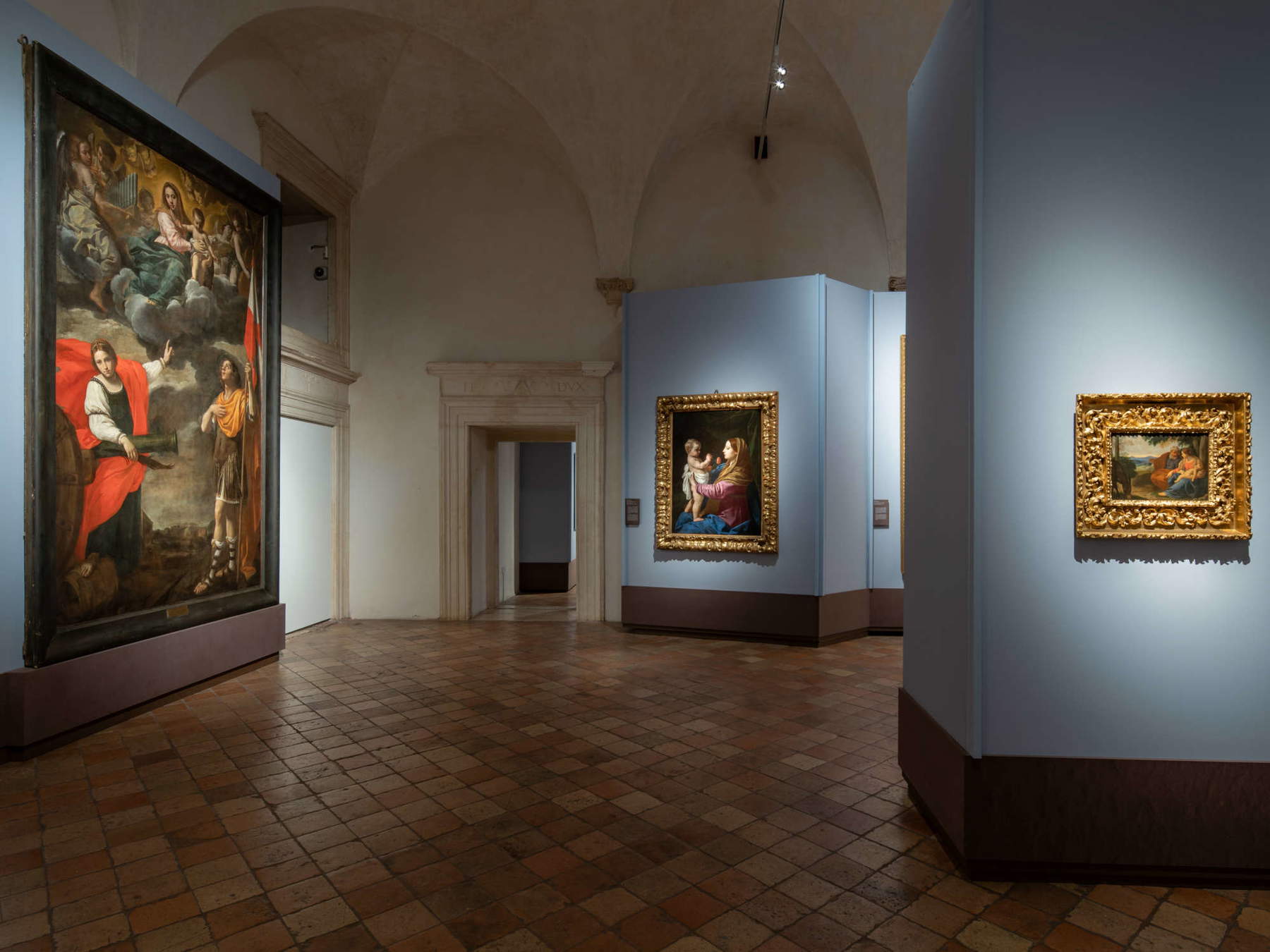

At the basis of this style there is an extraordinary ability to synthesize the most diverse impulses: the elegance of Guido Reni, the naturalism of Giovanni Francesco Guerrieri’s affections, the transparent lights of Orazio Gentileschi, even the classicist poetry of Annibale Carracci and the neovenetian grace of Sassoferrato. Cantarini, however, does not merely assimilate: he filters, interprets, reinvents in the light of an eclecticism that does not stop at the fragment but seeks to blend, that does not exhibit erudition but seeks balance. And it is precisely in this balance that his sacred elegy takes shape, his inner song that transforms devotion into a meditation on the human.
Even his earliest works, his youthful works, reveal an entirely personal vision, even when the models appear recognizable: an 18-year-old Cantarini, between 1630 and 1632, painted for the Pia Unione di Santa Barbara, a congregation based in the church of San Cassiano in Pesaro, the beautiful Madonna and Child in Glory between Saints Barbara and Terenzio, which today can be admired among the rooms of the Galleria Nazionale delle Marche in Urbino, where it has been since 2021, returned from the Pinacoteca di Brera, which had it in storage since the days of Napoleonic spoliations. In this painting, in spite of the obvious suggestions coming from the neovenetian impastos of Claudio Ridolfi and the naturalism of Giovanni Francesco Guerrieri, Cantarini already denotes a sentimental tension all his own by blending cues into a language that, Daniele Benati noted, is yes acerbic, but is nonetheless already personal: Saint Barbara, with her adolescent face, points to the heavenly scene with a measured gesture, while Saint Terence, bearing the features of the 18-year-old artist, perhaps even a self-portrait, raises his gaze to heaven with touching devotion. The musician angels and cherubim do not exhibit power, but gently accompany the apparition. It is a sacred that excites without imposing itself.
It is coeval, perhaps a little earlier, made after a study trip to Venice that dates back to 1627, an Adoration of the Magi that shows direct assimilation of the great Venetian masters, especially Veronese and Titian, with surprising maturity (suffice it to say that until 1013, when the discovery of ’some archival notes made it possible to imagine an early dating, theAdoration was considered a work of extreme maturity), to be read also in the light of Ludovico Carracci’s lesson from which derive the layout spread over two registers and the somber atmosphere. But even here elegiac afflatus imposes itself in the air: the adoration is recounted not with the pomp of colors or the impressiveness of the crowd, but rather through intense portraits, slight gestures, pensive faces. The very sweet baby Jesus already seems to carry within himself the consciousness of the sacrifice, observed by a mother with almost infantile features, who is represented, like her son, in profile: it is as if Cantarini wanted to make us even more involved, to make us witness the scene from an unusual angle, to make us become part of the story. It is a lively scene, but without excitement, where spirituality comes close to the people, in the realistic features (see those of the magi) and in the dim but familiar expressions.
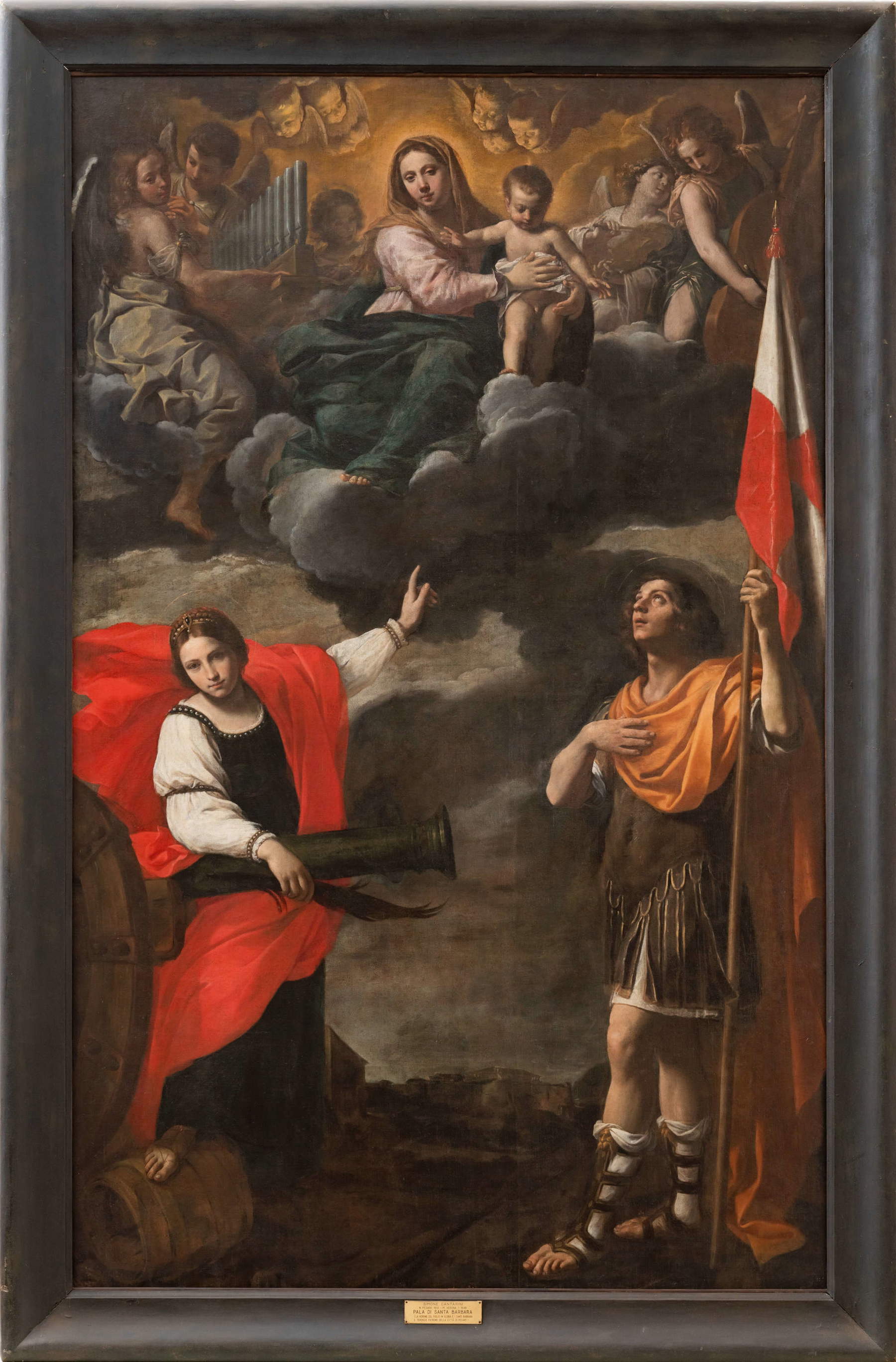
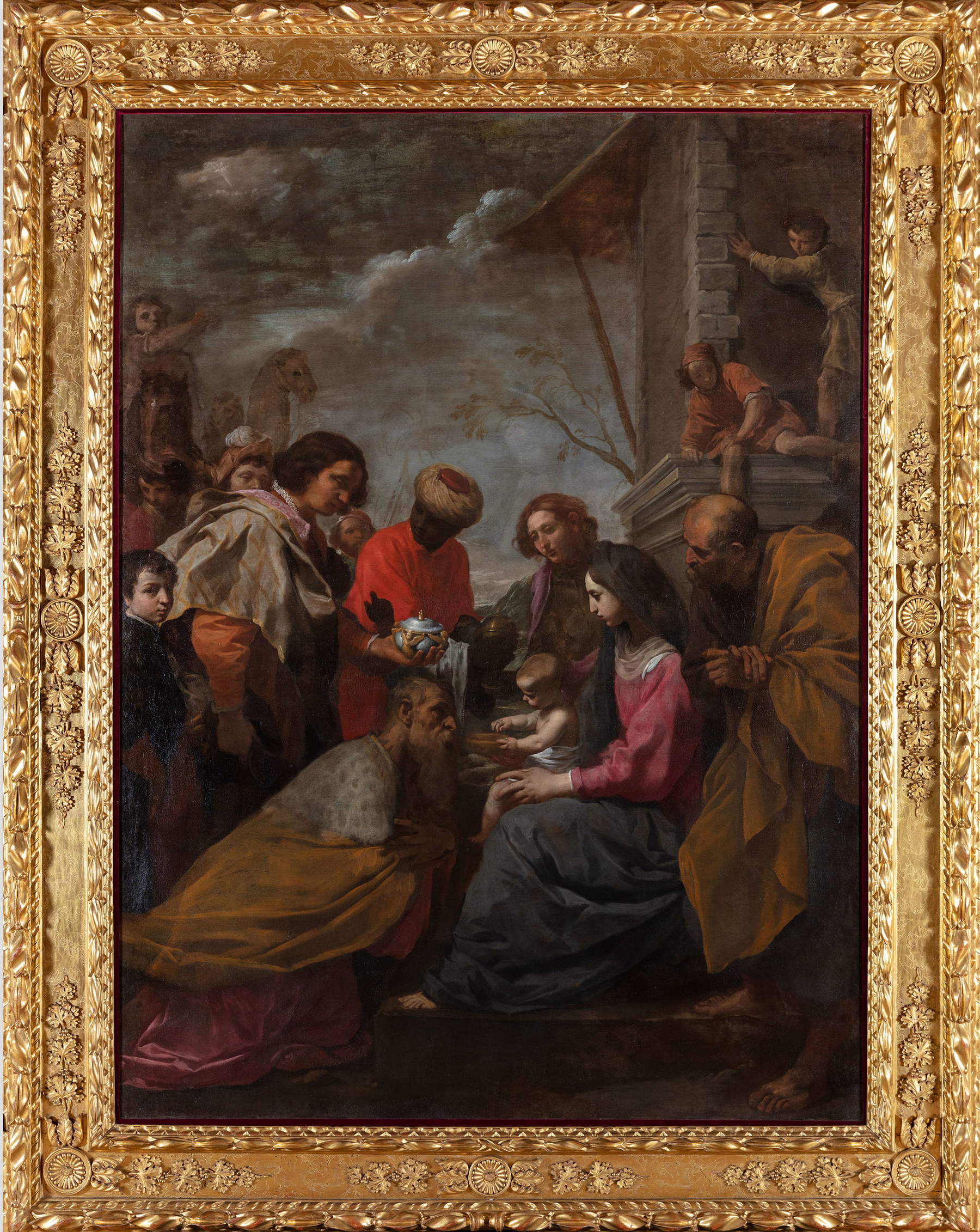
His mature arrival in Bologna is marked by a supreme stylistic freedom, the ability to make himself the interpreter of a new religious sentiment: theImmaculate Conception with Saints John the Evangelist, Nicholas of Tolentino and Euphemia, commissioned by the Gavardini family, is one of the greatest essays of the mature Cantarini. One of Cantarini’s greatest exegetes, Andrea Emiliani, had covered this painting with praise, deeming it to be "a painting that crosses with extraordinary finesse early Marche emotions from Gentileschi, Boscoli and even Barocci and then mixes them with the Bolognese Raphael par excellence, namely the Saint Cecilia of San Giovanni in Monte.“ Cantarini is here a painter who ”shows that he has now reached the time to let renism shine through as a resolving sign of the equation between virtue and beauty." The Virgin, suspended in the clouds, has a gaze swollen with tears, absorbed, delicate. The saints around participate not with emphasis, but with silent adherence. The golden light, the vaporous draperies, the human and delicate face of St. Euphemia, restore an emotional atmosphere that transforms the theological image into an inner tale. And it is a Cantarini who also becomes a painter of atmospheres, balancing between the Marche, Veneto, and Emilia; he is a painter who seeks to oppose the stark, even weekday reality of his characters with a heavenly vision that opens onto a golden sky and that will be found in one of the high points of his entire production, St. James in Glory, the apex of the Pesaro painter’s “renism,” as Francesco Arcangeli had already noted, and an emblematic painting in which the figure of the saint, ascending toward heaven, stands out against the golden light. Cantarini rereads Guido Reni’s lesson with originality, looking at the same time to Guido Cagnacci and his Magdalene Taken to Heaven which is the most immediate precedent of Cantarini’s composition: the saint is not a distant figure, he has an imposing physical presence, the angels almost twist under the clouds to support the weight of St. James, the clouds have their own consistency.
The elegiac tension becomes even more profound after the Roman sojourn (between 1639 and 1642): that journey left a deep impression on Simone Cantarini. Inspired by Caravaggio’s Madonna dei Pellegrini and the works of Orazio Gentileschi, Cantarini reformulates his own sacred, accentuating its human aspects. There are, however, significant prodromes, all on the theme of the Holy Family. Among the earliest, for example, is the Holy Family with St. Catherine of Siena, a work in the Galleria Nazionale delle Marche in Urbino, which revolves around an unusual iconography (probably, scholar Maria Maddalena Paolini speculates, a specific request from the patron): indeed, one sees a dragon opening wide its mouth in the direction of the Child Jesus (and who is, however, held on a leash by St. Catherine), and then again the eyeglasses held by St. Joseph (perhaps alluding to his knowledge of Scripture: this is the same reason why he is sometimes depicted with a book in his hand), and the same flowered rod that the Child gives to St. Catherine, an allusion to the wedding between Joseph and Mary and thus a symbol of the mystical marriage between Jesus and the saint. Also of a domestic and humble tone is the Holy Family with St. John kissing the hand of Jesus from the Borghese Gallery, which like the Holy Family with Book and Rose of c. 1638 is animated by a poetic figure attentive to the everyday, are paintings where the scene is constructed as a silent dialogue of affections: in the work in the Signoretti collection, Mary is absorbed in reading, the Child offers her a rose, Joseph watches pensively. Each gesture is symbolic but also intimate, and the emotion is consumed in the golden half-light, between subtle veils and warm tones, with a sense of sweet isolation. During and after the Roman sojourn, this vein intensifies upon contact with Caravaggesque naturalism. These are years when Cantarini’s sacred elegy tends to become more collected. His Sacred Families are small domestic masterpieces, designed for private devotion. Here, Cantarini’s tones find a congenial dimension in closeness, empathy, dialogue: St. Joseph, for example, is no longer a spectator but almost always participates actively, the Child plays, the Madonna reflects. The lights are soft, the colors muted, the lines curved. Art here becomes whispered prayer, everyday affection sublimated in painting. The Urbino exhibition presented a splendid unpublished work, a Holy Family from a private English collection: a rigorous work with an impact that is paradoxically monumental and everyday at the same time, with the characters looking like classical statues but exuding familiarity, a work that, writes Nikita de Vernejoul, is “permeated by a subtle balance between Cantarini’s naturalist inclination and Reni’s idealist tendency, [.... likely made around 1640, during or just after his supposed stay in Rome.” More restrained, on the other hand, appears to be the Prado’s Holy Family , marked by a rigorous classicism, Reni-like and composed in its two main figures, the Madonna and Child (she is caught observing the relative: it is the only case in Cantarini’s entire production, denoting the assimilation of Raphael’s portraiture and the ancient statuary studied in Rome), but intense and naturalistic in the passage of St. Joseph who, a little further back, is caught in the everyday act of reading a book. Instead, we return to a piece of sweet intimacy with the Madonna of the Rose, dated 1642: the Virgin receives from the Child a rose, a symbol of love and sorrow, in a very pure, almost neoclassical composition, reminiscent of Raphael and Sassoferrato, but which is nevertheless capable, in its distilled clarity, of conveying a sense of profound melancholy. The same melancholy that brings to life the Holy Family that Cantarini painted in two variants, one now in the Galleria Colonna, the other in the Galleria Corsini, also in Rome: “It is in works like these,” writes Yuri Primarosa, “that the young pupil challenged the master, proposing a happy alternative to the depotentiated naturalism of the classicist style and the more immediate approach to the real of Caravaggio’s ascendancy. While Reni corrected bare and raw nature with the idea, Cantarini investigated new expressive possibilities by delighting in the affects and the alternation of stylistic registers, in the darkness that adds meaning to the light.”
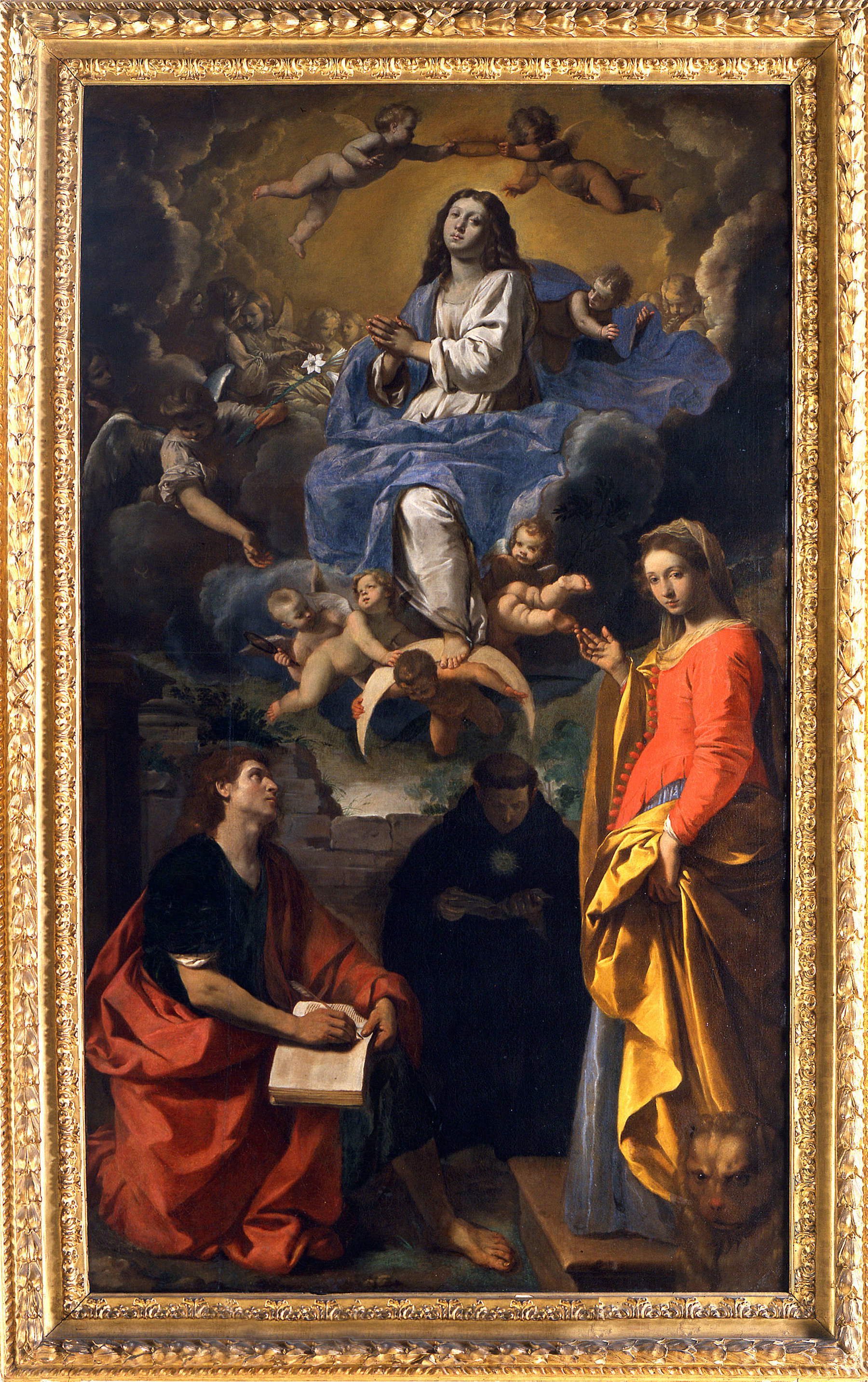


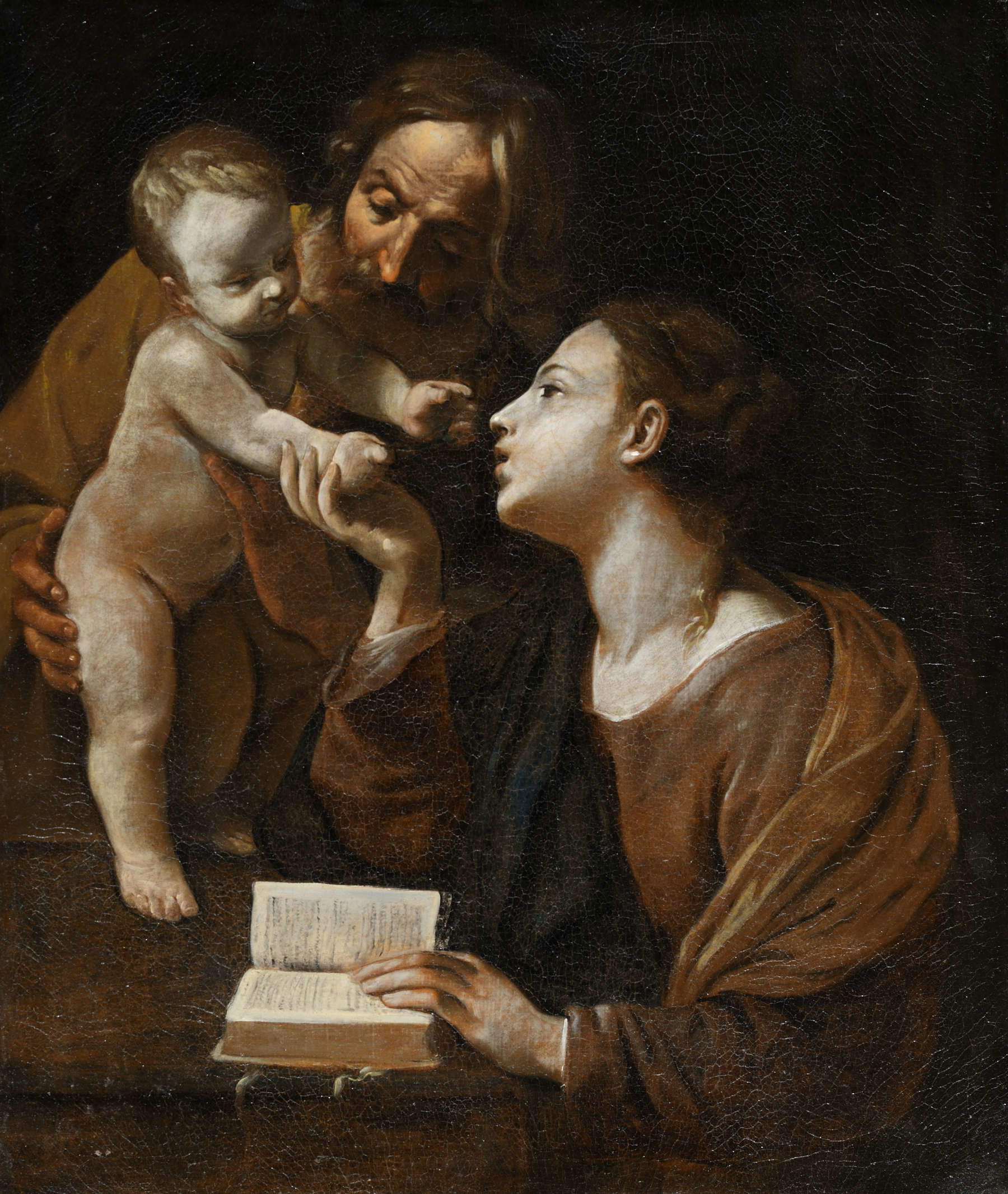
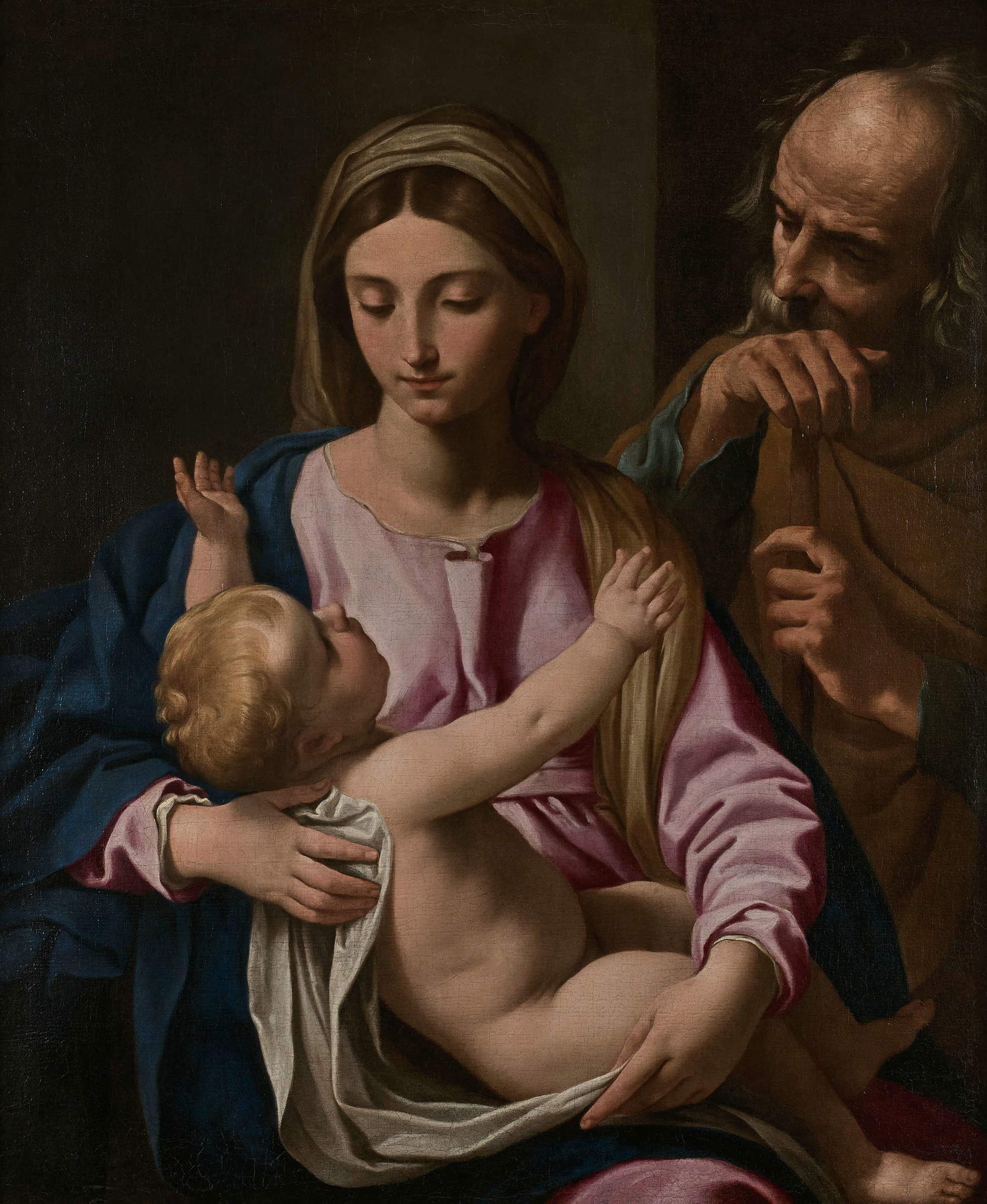


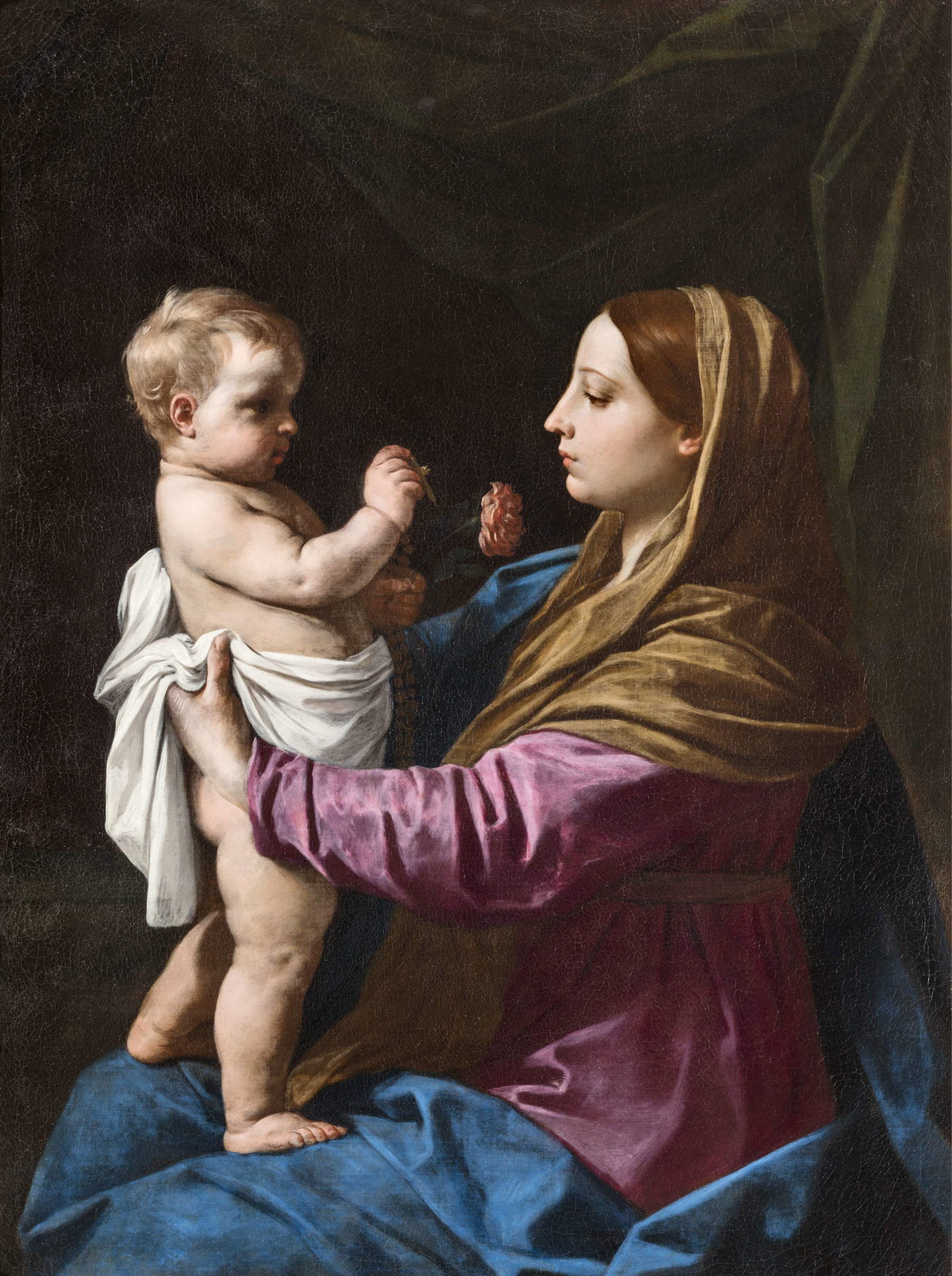
Simone Cantarini died young, at the age of thirty-six, under circumstances that have never been fully clarified, leaving behind a vast oeuvre, strewn with finished and unfinished paintings, quick drawings and lightning-fast sketches, and refined engravings. Yet in his brief parabola he was able to define a personal vocabulary that anticipates more modern sensibilities: romantic melancholy, the cult of intimacy, everyday commotion. In his figures one can feel the vibration of the flesh, the quiver of affection, but also the consciousness of death and fragility. Simone Cantarini was not merely an epigone of classicism nor a mere pupil of Guido Reni, as has often been considered, although his stature is now fully recognized. “In addition to interpreting Guido’s language better than anyone else without trivializing it,” writes Yuri Primarosa, “Simone was able to translate Guido’s styles into his own naturalistically oriented manner, giving voice to figures of flesh and blood that revived the initial model, to the point where he could claim to be considered a ’master [even] before entering the school’” as Carlo Cesare Malvasia had observed as early as the seventeenth century. The interesting aspect, Primarosa further suggests, is that it remains a mystery “how such an exploit could have occurred, on the basis of such a defiladed starting context” such as the one in which Simone Cantarini was formed and matured, demonstrating, as we have seen, a precocious talent.
Cantarini then left a mark on later painting. His pupils, from Flaminio Torri to Lorenzo Pasinelli, picked up his message and spread it, even if at times dampening its inner tension. His influence can be felt in the sensual chiaroscuro, Arcadian landscapes, and motions of the soul that punctuate Emilian and European painting of the second half of the 17th century.
Cantarini’s art, especially in the sacred, takes on an almost musical character: the modulation of affect and light becomes harmony, variation on a theme. This is the essence of sacred elegy that distinguishes him: a whispered, consciously human spirituality. A painting that, without ever renouncing beauty, becomes a testimony to the motions of the heart and the melancholy of existence. Simone Cantarini, even in the brevity of his artistic parabola, knew how to touch deep chords of Baroque feeling, and he did so not by blindly adhering to the dictates of the Reno school, nor even by totally abandoning himself to the naturalism of Caravaggio and followers, but by forging a language of his own, capable of combining sweetness with truth, elegance with disturbance, faith with interiority. A “sacred elegy,” indeed, that remains among the highest and most original contributions of the Italian seventeenth century.
Warning: the translation into English of the original Italian article was created using automatic tools. We undertake to review all articles, but we do not guarantee the total absence of inaccuracies in the translation due to the program. You can find the original by clicking on the ITA button. If you find any mistake,please contact us.